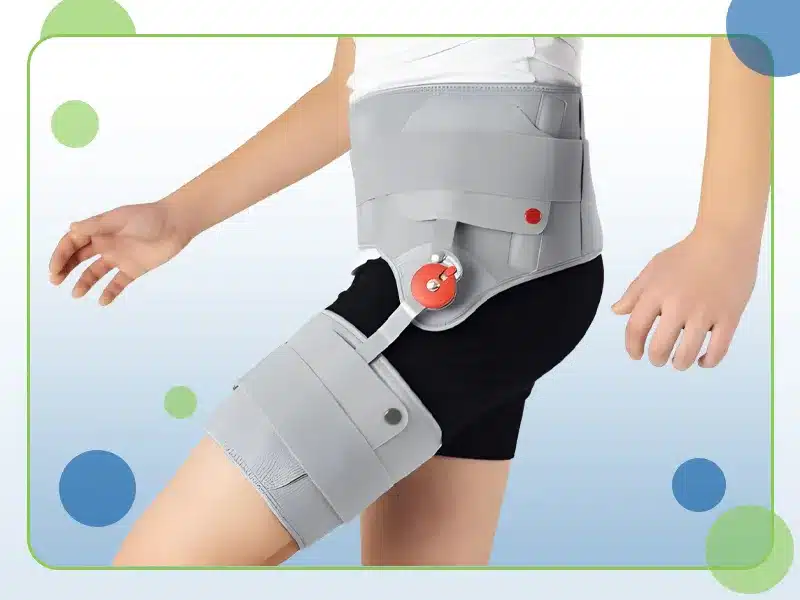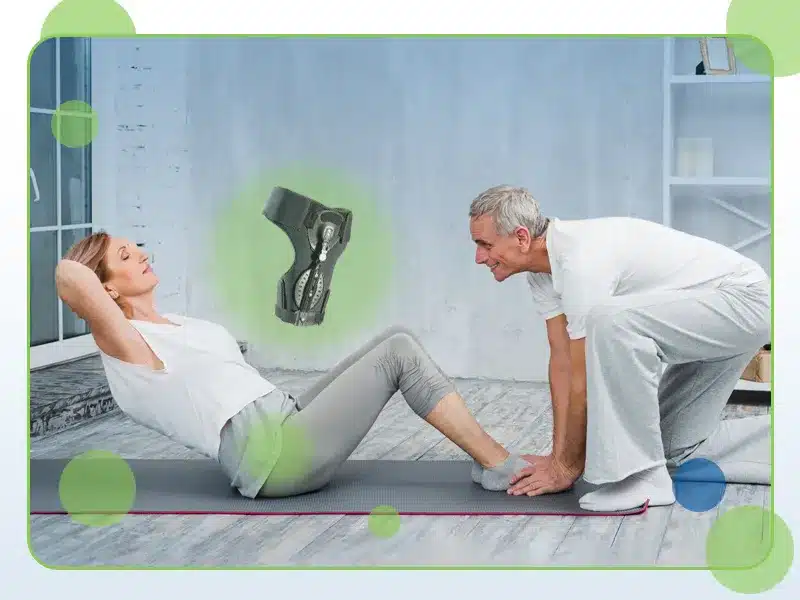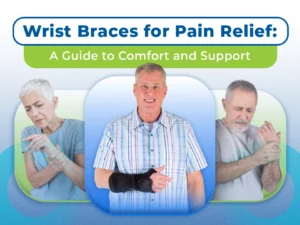Embracing an active lifestyle is essential for well-being. Still, it often challenges the hips, which are integral in most movements and prone to strain and injury, particularly in active individuals and older adults. A hip support brace becomes a vital aid for those contending with hip pain, instability, or post-injury recovery. This article provides a comprehensive overview of the benefits of hip support braces, guidelines for choosing the right one, and tips for staying active while managing hip discomfort. It’s particularly beneficial for athletes, people with physically demanding jobs, or anyone looking to remain active despite hip-related issues, enhancing quality of life and physical performance.
Understanding Hip Pain in Active Individuals
For those leading active lifestyles, hip pain can be a common yet challenging issue. Engaging in activities that involve repetitive or high-impact movements can put significant strain on the hip joints. Understanding the root causes of hip pain is crucial in managing and preventing it effectively. Common causes include:
- Muscle Strain: This is often a result of overexertion during physical activities, leading to stretched or torn muscles around the hip. Sudden movements or lifting of heavy objects can exacerbate this strain.
- Arthritis: Arthritis, particularly osteoarthritis, is a common cause of hip pain in active individuals, especially as they age. The wear and tear from constant movement can lead to inflammation and degeneration of the hip joint.
- Overuse Injuries: Regular participation in high-impact sports or activities can lead to overuse injuries. These injuries occur from repetitive stress on the hip joint without adequate rest and recovery, leading to conditions like bursitis or tendinitis.
- Hip Impingement: Active individuals may also experience hip impingement, which occurs when there is abnormal contact between the hip joint’s ball and socket, causing pain and limited movement.
- Labral Tears: The labrum, a cartilage ring around the socket of the hip joint, can tear due to repetitive motion or direct trauma, which is common in athletes or those engaged in strenuous activities.
The Role of Hip Support Braces
Hip support braces are crucial in managing and recovering hip-related issues, especially for active individuals and athletes. These braces are engineered to offer several key benefits:
- Stability: One of the primary functions of hip support braces is to stabilize the hip joint. This is particularly important for recovering from injuries or surgeries where the hip joint needs additional support to function properly.
- Pain Reduction: By stabilizing the hip and providing compression, these braces help reduce pain. They achieve this by limiting unnecessary movements that can aggravate the pain and by providing gentle compression that can help reduce inflammation.
- Injury Prevention: For athletes and active individuals, hip support braces can be essential for injury prevention. They help maintain proper alignment and reduce the stress on the hip during high-impact or repetitive activities, thereby decreasing the risk of injuries such as strains or sprains.
- Recovery Aid: A hip support brace can aid recovery post-surgery or after a hip injury. It ensures the hip is kept safe, preventing movements that might delay healing or cause further damage.
- Confidence in Movement: Wearing a hip brace can provide the psychological benefit of feeling more secure and confident in movements. This can be especially important in returning to physical activities after an injury or surgery.
Benefits of Using Hip Support Braces
Hip support braces are a valuable aid for individuals dealing with hip discomfort, instability, or recovering from injuries. Here are some of the primary benefits of using hip support braces:
- Stability and Support: Hip braces provide essential stability to the hip joint, which is especially important for those with joint instability or muscle weakness. This added support can significantly reduce the risk of injury or re-injury during daily activities or sports.
- Pain Management: One of the key benefits of hip braces is pain relief. They work by compressing the hip area, which can help reduce inflammation and alleviate pain. This compression can also help manage conditions such as arthritis or post-surgical pain.
- Improved Mobility: With the reduced pain and increased support provided by the brace, individuals often experience improved mobility. This improvement can be crucial in maintaining independence and carrying out daily tasks more comfortably.
- Enhanced Performance: Hip braces may enhance the performance of athletes or active individuals. By providing extra support and stability, these braces can help maintain proper hip alignment during physical activities, potentially improving efficiency and safety.
- Injury Prevention: Regular use of hip braces during high-risk activities, such as sports or heavy lifting, can significantly prevent potential hip injuries. They help safeguard the hip joint from strains and other injuries by ensuring better alignment and reducing undue stress on the hip.
Choosing the Right Hip Brace
Choosing the right hip brace is crucial in effectively managing hip discomfort or injuries. Here are key considerations to ensure you select a brace that best suits your needs:
- Assess Your Specific Needs: Understand the particular condition or injury you’re dealing with. Different conditions may require different types of support, such as more rigid support for post-surgical recovery or flexible support for chronic pain management.
- Determine the Level of Support Required: Evaluate how much support and stabilization your hip needs. This depends on the severity of your pain or injury and the amount of movement your daily activities involve.
- Consider Material and Comfort: Since the brace will be worn for extended periods, it’s important that the material is comfortable and skin-friendly. Look for breathable fabrics to minimize skin irritation and discomfort.
- Ensure Proper Fit: A well-fitting hip brace is crucial. It should be snug enough to provide support but not so tight that it restricts circulation or movement. Adjustable straps can offer a more customized fit.
- Consult Healthcare Professionals: Seeking advice from healthcare professionals, such as orthopedists or physiotherapists, can provide valuable insights. They can recommend the type of brace most suitable for your condition and ensure it fits correctly.
Read More: Unlock Your Mobility: Hip Braces Revolutionizing Rehabilitation
Tips for Maintaining an Active Lifestyle with a Hip Brace
Adapting to an active lifestyle while wearing a hip brace requires careful planning and consideration. Here are some useful tips to help you stay active and manage your condition effectively:
- Gradual Activity Increase: When using a hip brace, it’s important to ease into physical activities gradually. Avoid jumping into high-intensity or strenuous activities immediately, as this can put undue stress on your hip joint. Start with low-impact exercises and gradually increase the intensity as your body adjusts to the brace.
- Proper Warm-Up: Conduct a proper warm-up routine before engaging in physical activity. Warming up helps prepare the muscles and the hip joint for the increased demand of physical activities, reducing the risk of injuries. Stretching and light aerobic exercises can be effective in warming up your body.
- Listen to Your Body: Pay close attention to how your body responds to different activities while wearing the brace. If you experience pain or discomfort, it may be a signal to adjust your activities or the way you’re using the brace. It’s crucial not to ignore these signals, indicating strain or improper brace use.
- Regular Breaks: During activities, take regular breaks to prevent overstraining the hip area. Pacing yourself and allowing time for rest can help avoid exacerbating your condition. These breaks are also a good time to check if the brace needs any adjustments for comfort or support.
- Consult Healthcare Providers: Keep in regular contact with your healthcare providers. They can provide guidance on the types of activities that are safe and beneficial for your condition. Additionally, they can ensure that your hip brace is still suitable for your needs and make necessary adjustments. Regular check-ins are vital for safely maintaining an active lifestyle using a hip brace.
Maintaining Your Hip Brace
Maintaining your hip brace properly is essential for ensuring its longevity and effectiveness. Here are key practices to keep in mind:
- Regular Cleaning: Clean your hip brace to maintain hygiene and prevent skin irritation. Follow the manufacturer’s instructions for cleaning, as different materials may require specific care.
- Proper Storage: Store your brace in a cool, dry place when not in use. Avoid folding or bending it in ways that might damage its structure or material.
- Routine Inspections: Inspect your brace for any signs of wear and tear, such as fraying straps or weakened supports. Early damage detection can prevent further deterioration and maintain the brace’s functionality.
Hip Pain No More: Artik Med’s Effective Hip Brace
Artik Med’s medical hip brace product is lightweight, breathable, and supportive. It’s easy to adjust for abduction and offers a customizable fit. If you’ve been dealing with hip pain or are recovering from injury or surgery, get the hip support you need. Artik Medical Supply is here for you. Contact us today for a free insurance eligibility check.
Conclusion
In conclusion, a hip support brace is essential for those with an active lifestyle facing hip discomfort or instability. It effectively bridges the gap between staying active and managing physical limitations or pain. By carefully selecting the right brace tailored to your specific needs and ensuring its proper maintenance, you can greatly enhance your ability to engage in your favorite activities with less discomfort. These braces alleviate pain and act as a preventive measure against hip injuries. Integrating a hip brace into your routine is a wise, health-focused choice that empowers you to confidently and comfortably continue your physical activities, playing a key role in your overall hip health and well-being.









